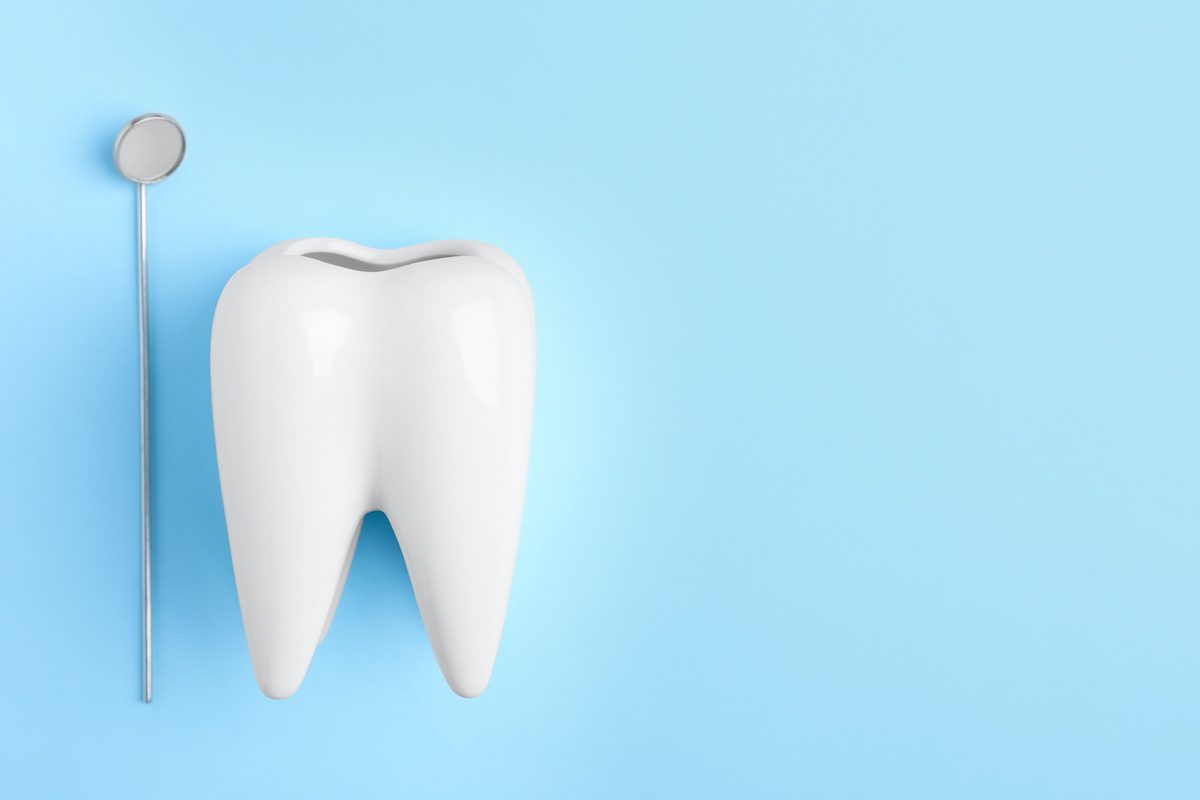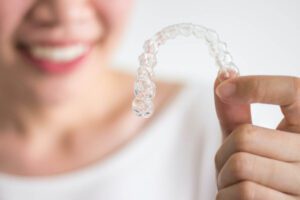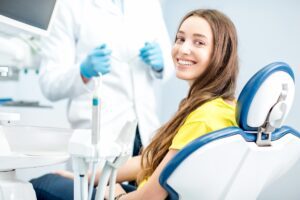Prepare for Your Appointment with Our Dental Office
Wondering what you can expect at your first appointment with Cura Smiles? Upon arriving, you’ll be greeted by our friendly and welcoming dental staff, who will check you in. If you have any insurance or are interested in financing or our in-house membership plan, please let us know upon arrival.

What To Expect at Your First Visit
Your First Dental Cleaning - During your first appointment at Cura Smiles, we will most likely perform a dental cleaning. This allows us to remove any debris, bacteria, plaque, or tartar hidden in your mouth, leaving your mouth thoroughly clean, fresh, and bright.
Your First Dental Exam - Following your first dental cleaning, we will discuss your oral and general health history and answer any questions you may have. Next, we will perform your first dental examination at Cura Smiles, allowing us to thoroughly evaluate your oral health and look for any signs of decay, damage, infection, and even disease.
In the event that any dental problems are noticed, we will discuss any recommended treatment options and questions you may have. Scheduling routine professional care can reduce your risk of dental complications and save you money and time in the long run.
Reminders for Your First Appointment
Please arrive for your appointment at least 10 minutes early.
Please bring any dental insurance documents you may have.
Please feel free to ask as many questions as you’d like!
Schedule Your First Visit at Bishara Dental
Ready to experience the exceptional dental care provided by Cura Smiles? Schedule your first visit with us today! We are always accepting new patients at our Houston dental practice and look forward to meeting you.
What To Expect at Your First Visit
Your First Dental Cleaning - During your first appointment at Cura Smiles, we will most likely perform a dental cleaning. This allows us to remove any debris, bacteria, plaque, or tartar hidden in your mouth, leaving your mouth thoroughly clean, fresh, and bright.
Your First Dental Exam - Following your first dental cleaning, we will discuss your oral and general health history and answer any questions you may have. Next, we will perform your first dental examination at Cura Smiles, allowing us to thoroughly evaluate your oral health and look for any signs of decay, damage, infection, and even disease.
In the event that any dental problems are noticed, we will discuss any recommended treatment options and questions you may have. Scheduling routine professional care can reduce your risk of dental complications and save you money and time in the long run.
Reminders for Your First Appointment
Please arrive for your appointment at least 10 minutes early.
Please bring any dental insurance documents you may have.
Please feel free to ask as many questions as you’d like!
Schedule Your First Visit at Cura Smiles
Ready to experience the exceptional dental care provided by Cura Smiles? Schedule your first visit with us today! We are always accepting new patients at our Houston dental practice and look forward to meeting you.
Patient Specials
FAQ
At our office, we use intra-oral sensors instead of conventional radiographic films. These sensors have two huge benefits over the conventional methods. Because of technological advancement, these sensors are extremely sensitive and require only a very small dose of x-rays for a very short period of time.
Because of their sensitivity, we have reduced the setting on the x-ray machine to its minimal setting. Therefore, the patient receives minimal exposure in the industry. The use of a lead apron shield while taking intra-oral radiographs further reduces that exposure to barely detectable. Contact our office should you have any further questions regarding our intra-oral radiograph protocol.
Flossing is important as it reaches the areas of the teeth missed by brushing. An individual who has gaps in between their teeth may be able to fit the brush all around the tooth and need not floss as opposed to an individual who has their teeth all tightly packed and cannot fit the brush in between. For such areas as in between the teeth, flossing is our only available means of cleaning. An individual should floss all their teeth daily. Chewing food forces particles and tiny pieces of food in between the teeth, and if those particles are not removed by flossing the tooth is at risk for decay.
Having white teeth makes for a bright and beautiful smile. And how much better would the world be if everybody walked around smiling? There is a major difference between the whitening products available for purchase at the regular convenience store and the products at a dental office. At a dental office, there is close supervision while the stronger bleaching products are being used, that safe administration is not guaranteed at home. It is for this reason that a dentist administered in-office bleaching works better than take-home products.
Too much of a good thing is a bad thing. We recommend In-office bleaching should be limited to no more than twice every year. Everybody is not equal, and most of the population’s bleaching needs fall under this frequency. Continuous maintenance with home whitening products combined with good brushing and flossing could greatly preserve the whiteness of teeth once an in-office session has been performed.
A large part of the public have their wisdom teeth removed by adolescence or in their 20’s; many will remove them even if there is no pain or evident problems at the time. Most often the reason for removing wisdom teeth have more to do with the teeth surrounding them versus the wisdom teeth themselves. Wisdom teeth, or third molars, tend to grow in the back corners of the mouth where there is not much space for them to fully erupt in the mouth like the other teeth. Just like real estate, with wisdom teeth, it is all about location, location, and location. The wisdom teeth will grow and try their best efforts to erupt like normal teeth, but if there is not enough space in the mouth well, their best efforts are not good enough. Often they will push other teeth during their eruption causing shifting of teeth, in such cases, it usually makes it extremely difficult for proper cleaning of those teeth and inevitably a cavity will form in the wisdom tooth. Even worse, a cavity can form in the adjacent tooth that was intact prior to the wisdom tooth’s movements.
Wisdom teeth can also remain unexposed due to lack of space for their eruption. In such cases, they will often grow in the direction of the tooth just adjacent to them causing undue pressure on that tooth and potentially damage its roots. When we detect wisdom teeth growing out of alignment on radiographs, often we recommend their removal in order to protect the adjacent teeth that can be irreparably damaged.
At times the wisdom teeth appear to be erupting properly only to remain stuck below the gums. Such a location for wisdom teeth can be dangerous for patients. Even small food particles can get lodged underneath the gums directly on the wisdom tooth which would be nearly impossible to clean. With little time, those food particles will undergo bacterial breakdown and cause an infection in the back of the mouth called Pericoronitis. This type of infection can spread quickly and become life-threatening. If you have any pain in the back of your mouth, call us immediately for a consultation.
A cavity begins to form because of the presence of damaging bacteria and acid breakdown in the mouth. The tooth is composed of two layers, an outer thinner Enamel covering a deeper layer called Dentin. Once the initial breach of the tooth structure has occurred, the tooth becomes weak and prone to further destruction by the bacteria. Cavities that are only in the Enamel layer are considered small and most often have no symptoms, unlike cavities that have grown deeper into the Dentin, which are usually sensitive to cold and sweet foods and drinks.
A cavity’s rate of growth is different from person to person. While some may have strong teeth requiring more work from the bacteria, others may not be so fortunate and have weak teeth that bacteria can break down faster. Better brushing will slow down the progression of most cavities as the bacteria is susceptible to toothpaste chemicals. Another solution is to change the type of toothpaste used. The effectiveness of certain types of toothpaste can change from person to person.
The major source of bad breath is food particles left behind in the mouth allowing high bacterial activity. These bacteria cause bad odors in the mouth. Besides having a healthy mouth, brushing combined with flossing have the ability to remove these food particles, therefore, avoiding foul odors.
In some cases, these methods alone are not sufficient, and the addition of an oral rinse may greatly help. There are many over the counter mouth rinses that are effective at removing bad breath. Another solution is to change the type of toothpaste used, from person to person different toothpaste will have different effects.
A dental implant, commonly known as a dental pin, is a great treatment modality to replace missing teeth. A dental implant is made from titanium metal, shaped similar to a screw, and it is the next best thing to a natural tooth. Implants are placed into the jaw bone where the missing tooth has left a gap. Being made of titanium, implants are lightweight and have the ability to bond tightly with the human bone, similar to plates and screws used to surgically repair broken bones. Once an implant is inserted into the bone, a healing period allows the bone to integrate with and grow around the implant; this allows the implant to sustain great forces of chewing. After the healing period has completed, an implant is restored by placing a crown that will function just like the natural tooth did prior to its loss.
Implants can be used to replace a single tooth or a whole arch of teeth. Some individuals with dentures, also known as plates, have a difficult time eating and functioning with these dentures because of bone loss most often associated with increasing age. Dental implants can be placed in the arch and plates can later be affixed to these implants, allowing a stable denture that is much stronger and more comfortable than before.




